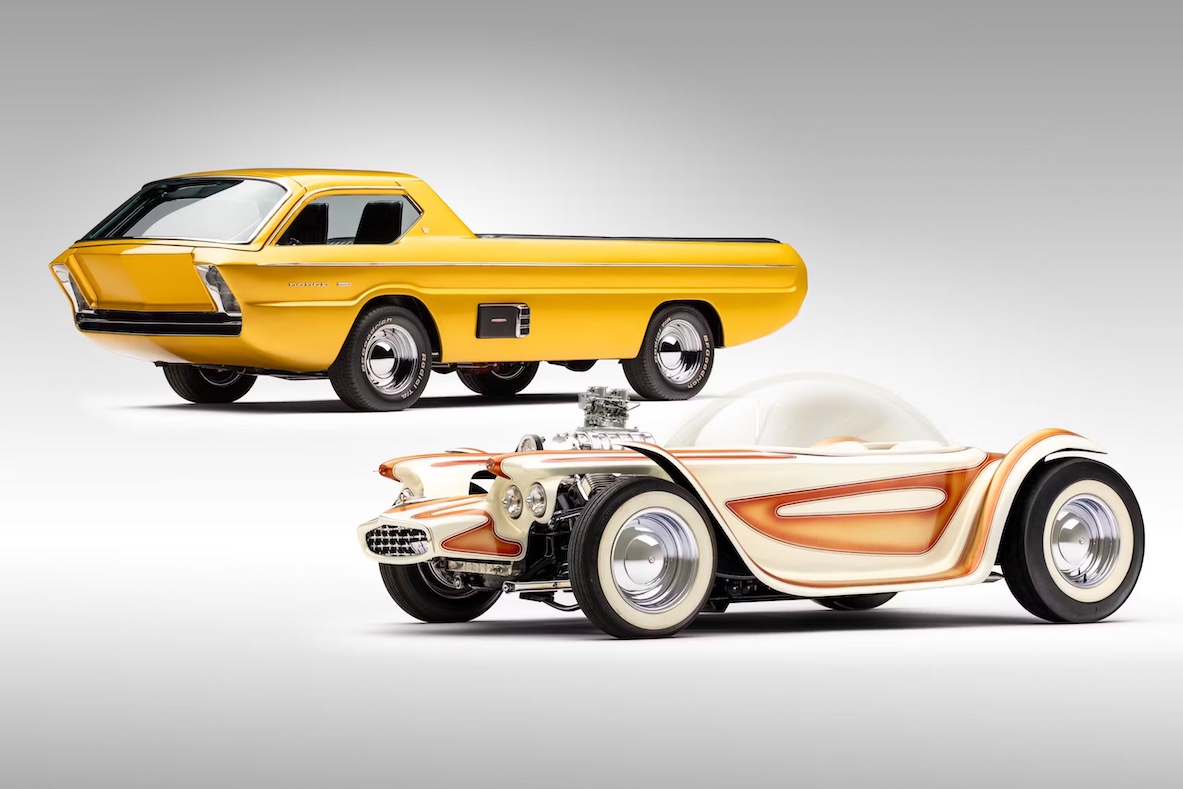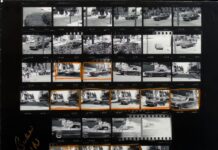Even if we don’t recognize the Cannonball Run Countach on sight, most of us recognize a 1979 Countach. Same goes for the Tucker 48—die-hard car fans will recognize the rare American sedan, but fewer can spot the Tin Goose prototype without a museum placard. And What do the Cannonball Countach and the Tin Goose have in common? They’re both documented in the Library of Congress as part of the National Historic Vehicle Register thanks to the efforts of the Hagerty Drivers Foundation, a 501 (c)(3) nonprofit.

The Register currently holds 34 vehicles—they’re added, two by two, each year. Today, we meet the next two inductees. Unlike the 1969 Corvette, the 1966 VW Transporter, or the 1984 Plymouth Voyager, there is absolutely no confusing either of these vehicles with another example of their kind because the Beatnik Bandit and the Deora are unique. They’re also two of the first 16 Hot Wheels ever made … but more on that shortly.

Beatnik Bandit and the Deora are both custom cars built in the 1960s, when independent shops and individuals alike vied to bring their wildest automotive visions to life. Who cared if the cars were street-legal? The wildest “kustoms” of the day were pure art, as we’ve written elsewhere, “caricatures of what a hot rod could be.” A true kustom didn’t need to crack off the quarter-mile in such and such a time; it needed to snap necks, pop eyes, and drop jaws.
Few were better at achieving such a reaction than Ed “Big Daddy” Roth. Based in Southern California, Roth was a talented fabricator with a wild imagination and deep connections in the hot rodding world. He’s best known for “Orbitron,” “Surfite,” “Mysterion,” and “Beatnik Bandit,” now the 35th inductee to the National Vehicle Historic Register.


Debuting in 1961, this root-beer-float of a kustom drapes a custom body on the shortened chassis of an Oldsmobile from the 1950s. Like many of Roth’s creations, as you can see above, Beatnik Bandit wears a bubble top. According to Kustomrama.com, it was made in a pizza oven: Ed baked a sheet of plastic until it was malleable, then blew it up to size. A single chrome tiller in the cabin turns the wheels, shifts the transmission, and opens the throttle … perhaps unsurprisingly, the kustom was only ever transported on a trailer. However, if you either built the Revell model of this car, or owned the Hot Wheels version, we’re willing to guess you put the kustom through its paces. Restored in 1985, Beatnik Bandit now enjoys a comfortable retirement in the care of the National Automobile Museum in Reno, Nevada.

If you thought Beatnik Bandit looks like a Hot Wheels come to life, you’re right on the mark: Roth’s creation was one of the first 16 Hot Wheels models ever cast. Among that exclusive group was also the Deora, the other 2024 inductee, the product of the other custom-car nexus in America: Detroit.

The actual Deora was built for the 1967 Detroit Autorama, one of the country’s most prestigious indoor shows for hot rods. The Deora was the handiwork of the “A Brothers,” Larry and Mike Alexander, now regarded as one of the “most technically capable builders during the golden age of custom cars.” The Deora began life as a humble Dodge A100 pickup truck. It showed up at Autorama looking nothing like its former self: You got into the cabin from the front of the vehicle, pushing up the top-hinged windshield (the rear hatch of a Ford station wagon, in fact) and swinging open the front horizontal panel, which hinged in the middle of the car. The slant-six engine was moved back 15 inches to accommodate everything.


The Deora captured Autorama’s top prize, the Ridler Award, and Dodge was so impressed that it asked and received permission to take the Deora on tour. Like Beatnik Bandit, it was also made into a model kit, offered by AMT. The man who designed the car for the A Brothers, a fellow by the name of Harry Bentley Bradley, also led the design of the first sixteen Hot Wheels the year after the Deora debuted. Given that he chose not only the Deora but Beatnik Bandit, we’d say he had great taste in customs. Today, the Deora is owned by Tom Abrams, the CEO of Reliable Carriers.
“These two custom cars captured the national imagination when they were first introduced, epitomizing a period of customization from the great independent car designers and craftsmen,” said McKeel Hagerty, CEO of Hagerty. “The cars memorialized by Mattel’s™ Hot Wheels™ models set the toy market on fire in 1968 and continue to capture the hearts of enthusiasts and help expand car culture.”

Want to get up close and personal with two legendary customs, the real-life versions of two of the original Hot Wheels? If you’re in the D.C. area, you can see each car on the National Mall between the Smithsonian National Museum of American History and the United States Department of Agriculture—for free! The cars will take turns inside of HDF’s illuminated glass display case leading up to September 22, Cars at the Capital Family Festival Day, when both will be on display. If you’d like to know more about Cars at the Capital, check out this link.






Report by Grace Houghton for hagerty.com










